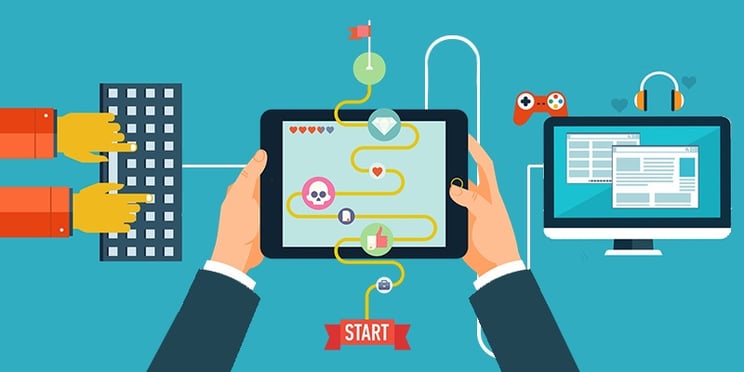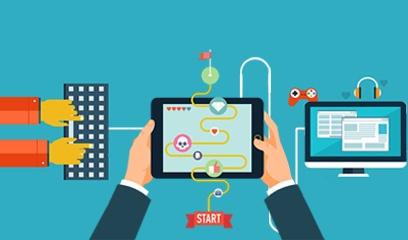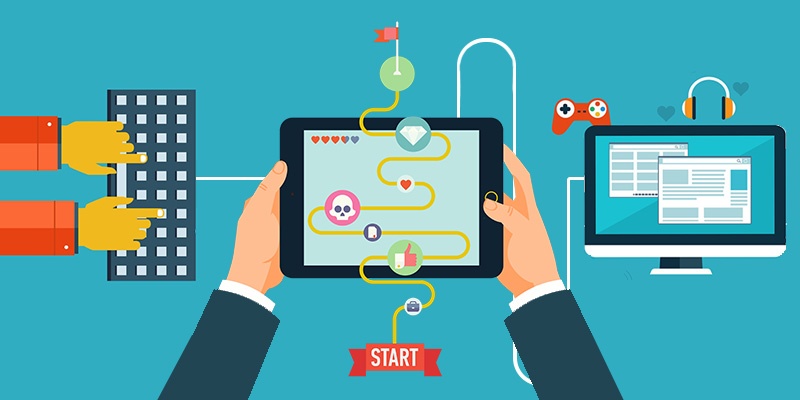
Your challenge is to build an agile workforce that can achieve your company’s growth and profitability goals. The executive team expects it to be done quickly and efficiently, with high levels of participation and retention.
One obstacle standing before you is that the traditional classroom model is proving less and less effective in meeting corporate learning needs. Classroom teaching consumes large blocks of uninterrupted time, moves at a fixed pace, provides little ongoing feedback, and other than a certificate at the end may provide participants with little recognition for their efforts. Recorded courses delivered to a PC address some of these shortcomings, but they are better as a test administration method than as a way to build core knowledge.
Over the past decade gamification, or game-based learning, has been emerging as an alternative to traditional classroom instruction. Its ability to improve the speed and quality of corporate learning is becoming apparent as both large and small companies adopt it.
What is Gamification?
Gamification is the application of concepts such as point accumulation, recognition, player journeys, player collaboration and other gaming design principles to engage participants in tasks and activities. You may be a participant in an early and still vibrant application of gamification -- airline loyalty programs. As in many online games, frequent flyers can accumulate rewards, earn status and gain privileges.
Today gamification is widening its reach and sophistication. While the number of customer loyalty programs are growing, many companies are deploying “gamified” applications to provide task-specific training, strengthen employee knowledge and skills, encourage adaptation of new processes, and promote desired behaviors. Some examples:
- McDonald’s in the UK, with over 1300 locations,trained its staff on a new cash register system using a live service simulation that included competitive time trials, scoring, lifelines, and customer satisfaction scores.
- HP is supporting its sales force accreditation process with multiple training modules, some of which use games to reinforce product knowledge and others that have participants use their sales skills training in simulated selling situations.
- Accenture used a recognition system to encourage wider use of a new collaboration application. Leading employees were scored and recognized for blogging, rating content, and creating user profiles.
How Gamification Improves Corporate Learning
Game-based training offers numerous benefits over traditional classroom based or passive e-learning. It delivers many of the benefits of “hands-on” training while adding motivational elements (scoring, recognition) that promote employee participation and achievement.
Game-based training can have an impact throughout the corporate learning agenda.
- Training for specific, discrete tasks in service and manufacturing environments can be delivered in short separate modules to improve retention of each task.
- Onboarding for new hires can familiarize employees with company policies and processes on such subjects as safety, ethics, and IT security, and assess their retention with situational simulations.
- Product and solutions training – a critical need for global sales forces – can be gamified to give recognition to sales staff for increasing their subject matter expertise.
While the “formal” learning agenda is important, there’s another learning landscape where gamification may be even more critical – new technology and process adoption. Companies may spend tens of millions of dollars on enterprise, CRM and knowledge management systems only to find that employees are reluctant to adopt them. Game-based support applications for Oracle, salesforce.com, SAP and SharePoint are becoming an accepted part of new employee onboarding and company-wide implementation programs.
How to Start a Game-based Training Program
There’s skepticism about gamification, and it’s well founded. Game-based training is behavior-based, so pre-conceived notions about learning preferences can be a point of resistance. Your colleagues may dismiss it as a gimmick to attract smartphone-obsessed Millennials. It’s also a new field populated with many companies with varying levels of skills and experience.
- Start small. Identify one area that needs improvement. Employees may take too long to complete onboarding. Refresher training in ethics, safety or sexual harassment may have poor participation rates. Decide on the topic and the improvement you seek, whether it’s faster completion times, higher participation, or improved retention.
- Talk to multiple game-based learning developers. Look for a partner who has successful experience in your topic area and asks penetrating questions about your workforce, goals, and content. Before you select a developer, talk to reference customers about their results.
- Set senior management expectations. Your program is about improving the quality, efficiency and impact of corporate learning. Explain your goals and get their buy-in.
- Launch and evaluate. Set expectations for employees, supervisors and managers, and expect a few technical hiccups along the way as you implement the program. Assess the results and decide on your next steps.
Gamification and game-based training are in their infancy, but are rapidly entering the mainstream and over the next decade will become an important part of the corporate learning landscape.
Phenomecloud is a full-service technology company dedicated to helping clients solve business problems, improve the capability of their people, and achieve better results.





Leave a Comment